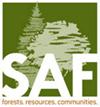A Least-Cost Dynamic Optimization Approach for Obtaining a Desired Balanced Uneven-Aged Structure
IF 1.5
4区 农林科学
Q2 FORESTRY
引用次数: 0
Abstract
There has been increasing interest among foresters and landowners in modifying existing even-aged forest structures to multi-aged or uneven-aged structures. Maintaining a continuous forest structure often provides a wider array of forest values over the long term. The conversion process is challenging in regions of the Northeast United States characterized by forests composed of dense diseased beech thickets and low-vigor deformed overstory trees. Abundance of noncommercial beech may result in negative cash flows during the conversion process to achieve a desired balanced uneven-aged structure. The Forest Vegetation Simulator was used to model growth and yield. Given the possibility of negative cash flows, a least-cost dynamic program with a penalty function was used to determine least-cost time paths for two management scenarios, one characterized by the successful removal of beech and the other simulating the continued presence of beech. Incorporating a penalty function allowed creating a continuum of least-cost paths from a zero penalty with the greatest weight given to net revenue goals to the largest penalty with the greatest weight given to ecological goals. Sensitivity analyses revealed least-cost paths were more stable given changes in prices and wages when greater emphasis was placed on the ecological goals associated with the target structure. Study Implications: There has been increasing interest in modifying existing even-aged forest structures to multi-aged or uneven-aged structures. However, in cases where the initial forest is dominated by undesirable growing stocks and might not provide sufficient revenue to cover management costs, a least-cost optimization would be more a suitable approach. The proposed method creates a continuum of least-cost paths from a zero penalty with the greatest weight given to net revenue goals to the largest penalty with the greatest weight given to ecological goals. This also allows identifying the opportunity cost of choosing one least-cost management regime over another. Finally, the landowner’s choice of the least-cost path most consistent with their management goals is the revealed optimal solution to maximize their welfare.获得理想平衡非均匀老化结构的最小代价动态优化方法
林农和土地所有者越来越有兴趣将现有的平均年龄的森林结构改造成多年龄或非平均年龄的结构。长期而言,维持连续的森林结构往往能提供更广泛的森林价值。在美国东北部以茂密的病山毛榉丛和低活力的变形高层树木组成的森林为特征的地区,转换过程具有挑战性。在转换过程中,非商业山毛榉的丰富可能导致负现金流,以实现理想的平衡不均匀年龄结构。利用森林植被模拟器模拟生长和产量。考虑到负现金流的可能性,我们使用了一个带有惩罚函数的最小成本动态规划来确定两种管理方案的最小成本时间路径,一种是成功移除山毛榉,另一种是模拟山毛榉的持续存在。结合惩罚函数可以创建一个最小成本路径的连续体,从给予净收入目标最大权重的零惩罚到给予生态目标最大权重的最大惩罚。敏感性分析显示,当更强调与目标结构相关的生态目标时,考虑到价格和工资的变化,成本最低的路径更稳定。研究意义:人们对将现有的均龄森林结构改造为多龄或非均龄森林结构越来越感兴趣。但是,如果最初的森林主要是不受欢迎的生长林,可能无法提供足够的收入来支付管理费用,则成本最低的最佳化将是更合适的办法。所提出的方法创建了一个最小成本路径的连续体,从给予净收入目标最大权重的零惩罚到给予生态目标最大权重的最大惩罚。这也允许确定选择一种成本最低的管理制度而不是另一种管理制度的机会成本。最后,土地所有者选择的最符合其经营目标的最小成本路径是其福利最大化的最优解。
本文章由计算机程序翻译,如有差异,请以英文原文为准。
求助全文
约1分钟内获得全文
求助全文
来源期刊

Forest Science
农林科学-林学
CiteScore
2.80
自引率
7.10%
发文量
45
审稿时长
3 months
期刊介绍:
Forest Science is a peer-reviewed journal publishing fundamental and applied research that explores all aspects of natural and social sciences as they apply to the function and management of the forested ecosystems of the world. Topics include silviculture, forest management, biometrics, economics, entomology & pathology, fire & fuels management, forest ecology, genetics & tree improvement, geospatial technologies, harvesting & utilization, landscape ecology, operations research, forest policy, physiology, recreation, social sciences, soils & hydrology, and wildlife management.
Forest Science is published bimonthly in February, April, June, August, October, and December.
 求助内容:
求助内容: 应助结果提醒方式:
应助结果提醒方式:


